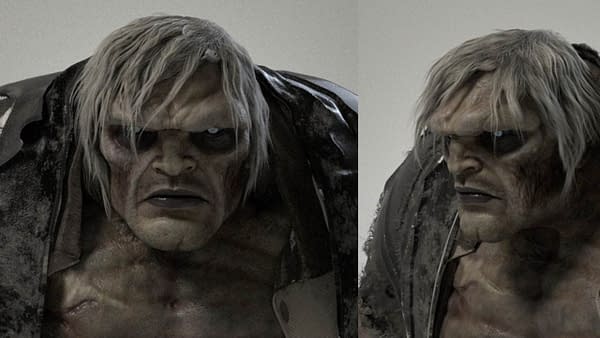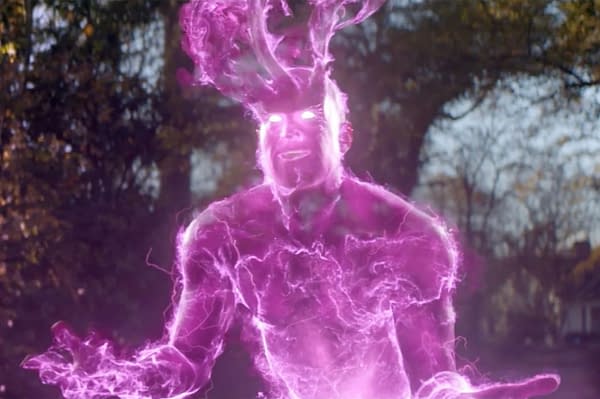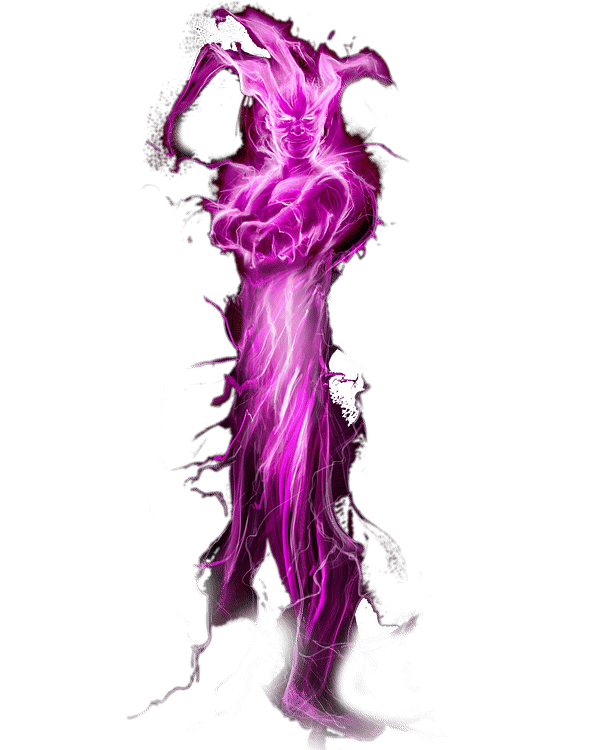Fans are reportedly blown away by the thrilling conclusion to The CW‘s DC’s Stargirl second season entitled “Summer School.” Ever since the pilot episode Zoic Studios Co-Founder/Executive Creative Director Andrew Orloff, who served as VFX Supervisor on the series, has been working very closely with creator Geoff Johns (Green Lantern, Shazam!) on the creative process that went into creating all the creature and character designs, including the Thunderbolt and Solomon Grundy. Orloff has been in the VFX game for quite some time creating visuals for Chilling Adventures of Sabrina, A Series of Unfortunate Events, and even Firefly. On the heels of the exciting Season 2 finale, Orloff sits with Bleeding Cool to share a rare behind-the-scenes look at Stargirl and explains how closely he works with Johns in the process of creating the Thunderbolt, and Solomon Grundy from conception to appearing on screen.

Andrew Orloff: Geoff talks about what it is and the idea. There’s Thunderbolt, there’s the staff itself, there’s Grundy, but the first thing we’ll do is talk about what the character is and look at how it’s been done previously in the comic books. So for Thunderbolt, for example, there is a pretty big difference and a look and feel for the way that the original JSA (portrayed) Johnny Thunder, green blazer and bow tie, to Alex Ross‘ Jakeem and the Thunderbolt. We’ll talk about what was cool about each one, what is important to the fans, and what’s the core of the character. A few touchstones of a starting point from the different comic book iterations.

AO: He’ll give me a brief, for Thunderbolt, it’s Robin Williams. It’s “Aladdin.” He’s big, super-powerful, but with crackling, crazy energy. He also let me know that Jim Gaffigan was going to do the voice, which gives me an idea of the core of the character. That’s important to me when I’m doing character design, what does this character want to communicate? There’s a sense of power, but there’s a sense of wild energy, chaotic magic, you know, and it’s electric and there’s bolts. Then we use a very talented fine artist concept illustrator, Paul Mellinger. We start old-school, on paper with sketches. The basic proportions, silhouette, and then a key pose that kind of gives you the character of the creature at a glance. Then we go into a longer process of developing the character in CG to realize the promise of the concept art, like a turntable without animation, and get all the lighting & shading in the modeling together and see what it looks like. Then we’ll start building a rough approximation of the character to use in our pre-visualization process.

AO: What we’re doing is making a somewhat simplified version of the characters, putting them into a game engine [Unreal Engine], and moving the cameras around, giving Geoff an opportunity to play around with different camera angles and different shot designs. Then we can start in with the performance, which is, you know, our animation team then really digs in deep and they put a lot of personality into a character like Thunderbolt, a lot of personality. He talks with his hands a lot, that’s part of his character and helps with the fanatic and the wildness of it. He also is very kind of loose in the core of his body. You know, he’s not ever standing still. He’s got permanent ADHD.
Did Jim do any motion capture, or did you film him while he was recording his lines?
AO: We did film him when he was recording his lines. We didn’t do motion capture for him, but we always do a video reference, if not facial capture. In this instance, we did a video reference of the line reads.
What aspects of him or his performance did you focus on?
AO: You know, it was interesting because my expectation was that he would be at 11 from the get-go. That’s what Robin Williams was like. He’s turned on the entire time and doesn’t stop. What Jim did was something super interesting, kind of contrasting where he was up and down in his performance. He was kind of muttering to himself sometimes, that really gave that feeling that he was kind of out of control. He’d say something, speak to himself and speak out, and that gave this really cool kind of chaotic feeling. That contrast in the different parts of his performance really guided our animation.
Read the original article here.